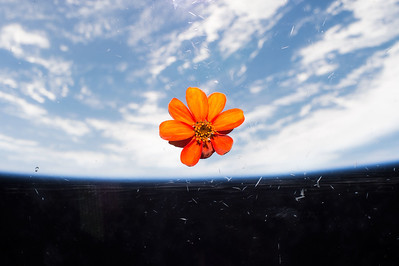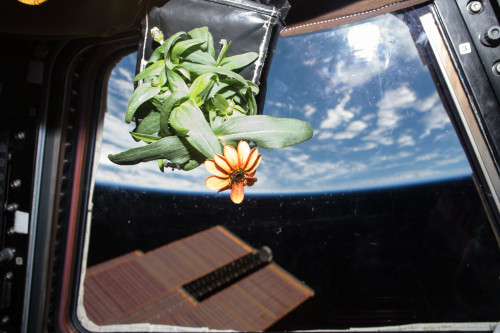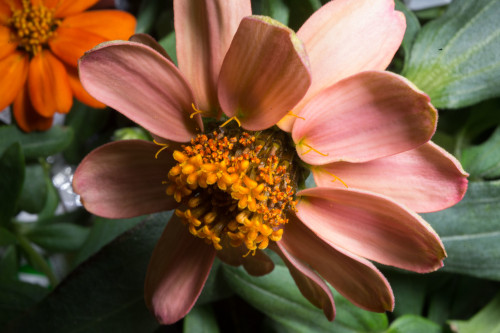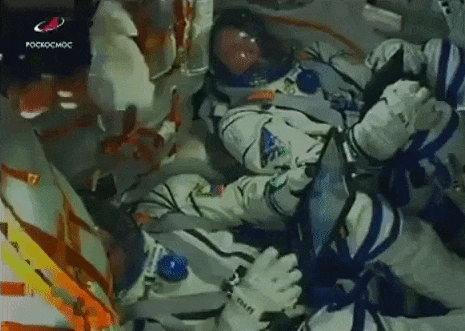ISS - Blog Posts


working in space (x)
En septiembre de 2006 como parte de la Misión STS-115, el astronauta de la CSA, Steve MacLean se convirtió en el primer canadiense en operar Canadarm2 en el espacio y el segundo canadiense en realizar una caminata espacial.
Crédito: @NASA


Remember when I went to space? Good times #destinymodule #iss #spacetourism #maybeillgototherealonesomeday (at Future of Flight Aviation Center & Boeing Tour) https://www.instagram.com/p/BoHOjnihe5L/?utm_source=ig_tumblr_share&igshid=16pof648w2tvj

💙Join our Space family💙 🔔And turn on post notification.🔔 - Kindly follow @_space___lover_ for more interesting posts in future. • Double TAP ❤️ for more.... Follow @_space___lover_ to Learn New Amazing Stuff Everyday - - Do you agree with this post? 💯 ❗️Follow us for more Space Science Facts❗️ @_space___lover_ @_space___lover_ @_space___lover_ @_space___lover_ @_space___lover_ ❤️ Like! 🍎 Follow @_space___lover_ 📜 Share with space lovers! 🔊 Turn on post notifications! . . . . . ---------------------------------------------------- . #iss #NASA #jwst #nasawebb #cosmoknowledge #physics#nasa#physicsonly#science#fact#philosophy#philosopher#scientist#astronomy#astrophysics#universe#hawking#particlephysics#physicist#space#stringtheory#blackholes#spacelover #spacex#madamcurie#maths#blackhole#fact#gravity#Cosmos#alberteinstein (at Iss - International Space Station - Nasa) https://www.instagram.com/p/CTwBPhDsijM/?utm_medium=tumblr

Join our Space family💙 🔔And turn on post notification.🔔 - Kindly follow @_space___lover_ for more interesting posts in future. • Double TAP ❤️ for more.... Follow @_space___lover_ to Learn New Amazing Stuff Everyday - - Do you agree with this post? 💯 ❗️Follow us for more Space Science Facts❗️ @_space___lover_ @_space___lover_ @_space___lover_ @_space___lover_ @_space___lover_ Double tap ❤️ Share More👇 Follow us for more 🌍 -tag:-) #nasa #galaxies #spacetravel #universes #earthplanet #nasabeyond #spacescience #mars #spacelover #physicsisfun #theoreticalphysics #rocketlaunch #rocket #iss #spaceart #elonmusk #spaceshuttle #astronaut #launching #astrophysics #portcanaveral #rocket #nasa #mightsky #astronomical #astronomy #jupiter #saturn #space (at Stars In The Sky) https://www.instagram.com/p/CNIFepBjdWH/?igshid=1993xavyzcshp

💙Join our Space family💙 🔔And turn on post notification.🔔 - Kindly follow @_space___lover_ for more interesting posts in future. • Double TAP ❤️ for more.... Follow @_space___lover_ to Learn New Amazing Stuff Everyday - - Do you agree with this post? 💯 ❗️Follow us for more Space Science Facts❗️ @_space___lover_ @_space___lover_ @_space___lover_ @_space___lover_ @_space___lover_ Double tap ❤️ Share More👇 Follow us for more 🌍 -tag:-) #nasa #galaxies #spacetravel #universes #earthplanet #nasabeyond #spacescience #mars #spacelover #physicsisfun #theoreticalphysics #rocketlaunch #rocket #iss #spaceart #elonmusk #spaceshuttle #astronaut #launching #astrophysics #portcanaveral #rocket #nasa #falcong #falconheavy #tesla #spaceflight #nasasocial #nasajpl #engineers #starlink (at 𝕤𝕡𝕒𝕔𝕖) https://www.instagram.com/p/CIiQptTDM8B/?igshid=1lf6x6znz62uh

- 💙Join our Space family💙 - - Kindly follow @_space___lover_ for more interesting posts in future. • Double TAP ❤️ for more.... Follow @_space___lover_ to Learn New Amazing Stuff Everyday - - Do you agree with this post? 💯 ❗️Follow us for more Space Science Facts❗️ @_space___lover_ @_space___lover_ @_space___lover_ @_space___lover_ @_space___lover_ Double tap ❤️ Share More👇 Follow us for more 🌍 -tag:-) #himalayancat #galaxies #spacetravel #universes #earthplanet #nasabeyond #spacescience #futures #alieninvasion #iss #himalayansaltlamp #humanscale #astrogeekz #dangeroustour #himalayas #_space___lover_ #plutoretrograde #himalyas🌄 #physicsisfun #theoreticalphysics https://www.instagram.com/p/CCv5iicnqii/?igshid=2gh5igx7n1lq

- 💙Join our Space family💙 - - Kindly follow @_space___lover_ for more interesting posts in future. • Double TAP ❤️ for more.... Follow @_space___lover_ to Learn New Amazing Stuff Everyday - - Do you agree with this post? 💯 ❗️Follow us for more Space Science Facts❗️ @_space___lover_ @_space___lover_ @_space___lover_ @_space___lover_ @_space___lover_ Double tap ❤️ Share More👇 Follow us for more 🌍 -tag:-) #earthpics #galaxies #spacetravel #universes #earthplanet #nasabeyond #spacescience #futures #alieninvasion #iss #blackholes #humanscale #astrogeekz #dangeroustour #pluto #_space___lover_ #plutoretrograde #plutoinscorpio #physicsisfun #theoreticalphysics https://www.instagram.com/p/CCuci_hHAqN/?igshid=6v6mvzbt7idb

#sciencememes #sciencefacts #scienceiscool #scienceisfun #physics #chemistry #maths #astronomy #spacefacts #aatronomyphotography #asronomer #cosmology #spacex #planets #galaxies #spacetravel #blackhole #telescope #neildegrassetyson #nasa #esa #isro #einstein #stephenhawking #carlsagan #iss #hubble #theuniquecosmos #earthplanet https://www.instagram.com/p/CCtI7fWnMh3/?igshid=k94fpxmb54im

The mass of the atom is concentrated in the nucleus (protons and neutrons are about 2000 times as heavy as electrons). Continue reading below for an explanation - The average human has a mass of about 62 kg, or 62,000 grams. That means the average volume of a human is 62,000 cubic centimeters. To get the total volume of the human race, just multiply that by 7.6 billion: 470 trillion cc. Atoms are 99.9999999999% empty space, apart from a few objects called electrons that skim about at a great distance from the nucleus. To give you a sense of how empty an atom is - if the nucleus was the size of a football, the nearest electron would be half a mile (0.8km) away. So, if you could remove 99.9999999999% space from every atom from every single human on earth, it would be around 4700 cubic centimeters. And the volume of a basketball is 5575.28 cubic centimeters. That means the entire human population would easily fit inside a basketball.. . - 💙Join our Space family💙 - - Kindly follow @_space___lover_ for more interesting posts in future. • Double TAP ❤️ for more.... Follow @_space___lover_ to Learn New Amazing Stuff Everyday - - Do you agree with this post? 💯 ❗️Follow us for more Space Science Facts❗️ @_space___lover_ @_space___lover_ @_space___lover_ @_space___lover_ @_space___lover_ Double tap ❤️ Share More👇 Follow us for more 🌍 -tag:-) #earthpics #galaxies #spacetravel #universes #earthplanet #nasabeyond #spacescience #futures #alieninvasion #iss #blackholes #humanscale #astrogeekz #dangeroustour #artificialintelligence #whatifs #terrifying #beafraid #physicsisfun #theoreticalphysics (at Space) https://www.instagram.com/p/CCmq2eqHXBh/?igshid=15syh8gyxffc3

Billionaires plan for space. . . . Visit 👉 @_space___lover_ for more #interesting#facts about our #universe ! . . 🔉Turn on post notifications to see our #_space___lover_ every single day! . . Tag your friends who would love this information ❤️ 📩 . . ⠀#iss #earth #planet #nasa #spacestation#astronaut #spacexlaunch#spacex #spacexlanding #spaceshuttle#spacefacts #spaceflight #spacecraft#rocketscience #rocketlauncher #rocketpower#space #cosmos #outerspace #gravity #physics#perspective (at NASA) https://www.instagram.com/p/CCSITiMFlEj/?igshid=269kxphv8ivt


A celebratory Rocketeer Rosie (and Jeb) drawing in light of Boeing's successful Starliner OFT-2!
Look at ‘em go!

That one scrapped Space Station iteration...

Happy Earth Day! (2 days late but, ehh, whatevs!)

Successful launch of H-IIB rocket from Japan. The H-IIB rocket carrying the Japan Aerospace Exploration Agency's Kounotori 9 lifted off in the early morning of May 21. It was launched from Tanegashima Space Center. This cargo freighter carrying the last set of six lithium-ion batteries to upgrade the International Space Station’s solar power truss. This launch was the last in a series of nine H-IIB rockets, and also marked the ninth and final flight of Japan’s current-generation barrel-shaped HTV cargo carriers. Tighten your seatbelts and get ready to explore endless universe 🚀 Make sure you follow us @the_astrophysics_forum To stay on board 👨🚀 . . . . . . . #japan #jaea #japanspaceagency #iss #elonmusk #astrophysics #astronomy #science #nasa #universe #space #physics #cosmos #earth #astrophotography #galaxy #blackhole #spacex #planets #solarsystem #moon #einstein #quantummechanics #telescope #milkyway (at Japan Aerospace Exploration Agency) https://www.instagram.com/p/CC-3C6LnkFp/?igshid=16ed2wkbthkb
This Amazing timelapse shows the docking at the international space station. Tighten your seatbelts and get ready to explore endless universe 🚀 Make sure you follow us @the_astrophysics_forum To stay on board 👨🚀 . . . . . . . #iss #docking #issdocking #elonmusk #isro #astrophysics #astronomy #science #nasa #universe #space #physics #cosmos #earth #astrophotography #galaxy #blackhole #spacex #planets #solarsystem #moon #quantummechanics #astronaut https://www.instagram.com/p/CC8PgDEHMvH/?igshid=wezckl0e6qid

Space shuttle Endeavour and its six-member STS-134 crew head toward Earth orbit and rendezvous with the International Space Station. Follow us for more interesting content @the_astrophysics_forum . Tighten your seatbelts and get ready to explore endless universe 🚀 Make sure you follow us @the_astrophysics_forum To stay on board 👨🚀 . . . . . . . #spaceshuttle #spaceshuttleendeavour #iss #astrophysics #astronomy #science #nasa #universe #space #physics #cosmos #cosmology #earth #astrophotography #galaxy #blackhole #spacex #planets #solarsystem #moon #einstein #quantummechanics #telescope #milkyway #scientist #astronaut #stephenhawking https://www.instagram.com/p/CCOhZwAD6dm/?igshid=1e0xdyazj28ro
This crazy footage of earth from ISS 😍. Follow us for more interesting content @the_astrophysics_forum . Tighten your seatbelts and get ready to explore endless universe 🚀 Make sure you follow us @the_astrophysics_forum To stay on board 👨🚀 . . . . . . . #iss #astrophysics #astronomy #science #nasa #universe #space #physics #cosmos #cosmology #earth #astrophotography #galaxy #blackhole #spacex #planets #solarsystem #moon #einstein #quantummechanics #telescope #milkyway #scientist #astronaut #stephenhawking https://www.instagram.com/p/CCMC2EVjvyg/?igshid=sc9x5mtl4txv
The Earth never sleeps Tighten your seatbelts and get ready to explore endless universe 🚀 Make sure you follow us @the_astrophysics_forum To stay on board 👨🚀 . . . . . . . #aurora #auroraborealis #iss #astrophysics #astronomy #science #nasa #universe #space #physics #cosmos #cosmology #earth #astrophotography #galaxy #blackhole #spacex #planets #solarsystem #moon #einstein #quantummechanics #telescope #milkyway #scientist #astronaut #stephenhawking https://www.instagram.com/p/CBfwnzEFjjX/?igshid=sj8pazw3refj

Happy Sunday! Groovy Space Flower via NASA's Astronaut Scott Kelly on the International Space Station. #YearInSpace #ISS #SpaceFlower #SpaceStation

Spinoffs: Space Station Innovations in Your Cart (and Heart!)
You might think NASA technology is just spaceships and telescopes, but did you know the camera in your cell phone is, too? It’s one of many NASA innovations now found everywhere on Earth.
The International Space Station has had crew living on it for 25 years straight. In that time, the space station has enabled a tremendous amount of research, helping NASA and scientists better understand long-term living in space – but it’s not just knowledge coming back down to Earth! Technologies developed for the space station and experiments conducted aboard the orbiting lab also benefit people on the planet below. Here are a few of these inventions, or spinoffs, you can find in your everyday life.

A Sunscreen That Blocks Radiation in Space – and on Your Face
After surviving for 18 months outside the International Space Station, an extremely hardy organism is now improving sunscreens and face cream products from a cosmetics company, which licensed use of the organism from NASA’s Jet Propulsion Laboratory.


Build Muscle With or Without Gravity
Muscles atrophy quickly in space, so when astronauts began long stays on the International Space Station, they needed some specialized exercise equipment. A resistance mechanism made of a coiled metal spring formed the basis of the first way for astronauts to “lift weights” in space. Soon after, that same design became the heart of compact home gym equipment.

Fresh Greens Every Day of the Year
The need to grow fresh food in space pushed NASA to develop indoor agriculture techniques. Thanks to the agency’s research, private companies are building on NASA’s vertical farm structure, plant-growth “recipes,” and environmental-control data to create indoor farms, resulting in higher crop yields and better-quality produce while conserving water and energy and eliminating the need for pesticides.

Cultivating Hearts and Knees in Space
Gravity is a significant obstacle to bioprinting cells and growing human tissue on Earth because heavier components settle to the bottoms of petri dishes. In the absence of gravity, each cell layer stays in place, which is how it’s possible to grow heart and knee tissue on the space station. The same principle also allows mixing of complex pharmaceuticals on orbit.

Storing Oodles of Energy
NASA chose nickel-hydrogen batteries to power the Hubble Space Telescope and the International Space Station because the technology is safe, reliable in extreme temperatures, and long-lived. NASA’s improvements brought down the cost of the technology, which is now used by large-scale utilities and renewable power plants that need to store energy generated by intermittent sources.
You can read about many more products sourced from the ISS on spinoff.nasa.gov.
Make sure to follow us on Tumblr for your regular dose of space!


August 20, 2001 – Beautiful views of the International Space Station, observed from the Space Shuttle Discovery after the spacecraft undocked from the orbital outpost. (NASA)



Take a moment, look outside your window. 🌷🌼
Today is the #FirstDayOfSpring in the Northern Hemisphere, also known as the vernal equinox.
#DYK Earth’s tilted axis causes the season? Throughout the year, different parts of Earth receive the Sun’s most direct rays. So, when the North Pole tilts toward the Sun, it’s summer in the Northern Hemisphere. And when the South Pole tilts toward the Sun, it’s winter in the Northern Hemisphere.
These images are of Zinnias. They are part of the flowering crop experiment that began aboard the International Space Station on Nov. 16, 2015, when NASA astronaut Kjell Lindgren activated the Veggie system and its rooting “pillows” containing zinnia seeds.
Make sure to follow us on Tumblr for your regular dose of space: http://nasa.tumblr.com.

Soyuz MS-10 experiences launch anomaly; crew aborts to safe landing.
One of Russia’s most reliable launchers experienced a rare, in-flight anomaly earlier this morning, forcing the two-man crew of Soyuz MS-10 to abort the mission.
Following a normal liftoff at 4:40am EST (2:40pm local time), a malfunction in the Soyuz FG rocket two minutes into the flight forced Expedition 57 crewmembers Alexey Ovchinin and Nick Hague to abort a manual abort profile. The anomaly occurred immediately following the separation of the rocket’s four strap-on boosters and jettisoning of the Launch Escape System. However, the protective fairing covering the spacecraft during flight through the thick atmosphere was still on, and solid rocket motors attached to the fairing pulled the crew capsule away from the failing booster. Following a ballistic trajectory through the upper atmosphere, the Soyuz’s Descent module separated from the Orbital Module and payload fairing and descended to a safe landing 20 kilometers east of Zezkezhan, Kazakhstan, 34 minutes after launch. Roscosmos reported that the crewmembers experienced around seven times the force of gravity, or 7G’s, during their abort.
Recovery forces reached the landing site immediately following touchdown. Both astronauts were reported to be in good health following their ordeal, and returned to their families at the Baikonur launch site around six hours after liftoff.

Recovery forces at the Soyuz MS-10 emergency landing site. Source: Ruptly.

Soyuz MS-10 crewmembers Alexey Ovchinin and Nick Hague embrace their families following their return to the Baikonur Cosmodrome after today’s launch mishap. Credit: NASA/Bill Ingalls. This marks the first crewed launch mishap of the International Space Station program, the first crewed launch mishap since the Challenger disaster in 1986, and the first crewed Soyuz launch malfunction since Soyuz T-10 in 1983.
That incident saw the two-man crew of Vladimir Titov and Gennady Strekalov abort away from their exploding rocket shortly before its scheduled liftoff time. While no cause of the mishap is currently known, Russian authorities have begun an investigation of the incident and have temporarily grounded all future Soyuz flights. The current three-member crew of Expedition 57 is slated to return to Earth December 13, followed by the launch of Expedition 58 December 20. Following today’s anomaly, it is unclear whether Expedition 57 will remain on orbit longer, or when the next crew will launch to the station. Expedition 57 is able to remain on orbit until early January, when their Soyuz reaches its certified orbital lifetime.

Expedition 57 commander Alexander Gerst captured this image of the Soyuz MS-10 launch from the International Space Station. The anomalous nature of the launch is evidenced by multiple points of light along the ascent path. Source: NASA. Watch NASA TV coverage of the Soyuz MS-10 launch below.
P/c: NASA.



























